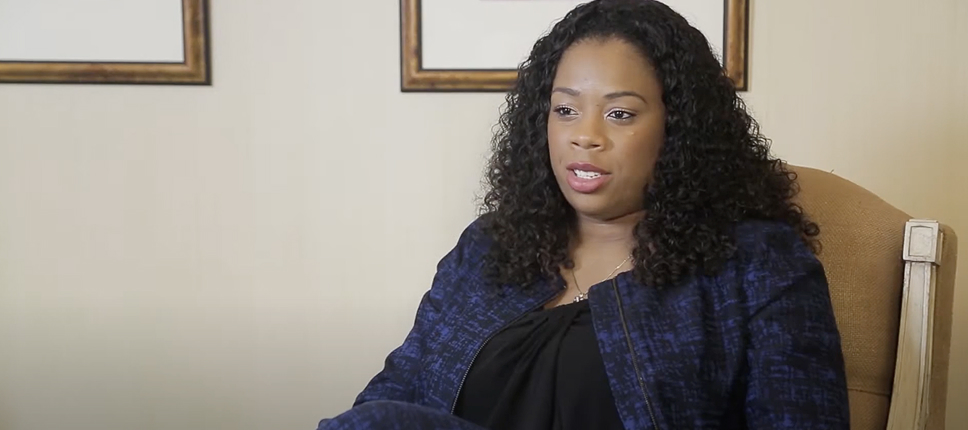Appearing On:
















Serious injuries deserve experienced attorneys
 It should come as no surprise that many DC injury cases require the help of a jury. After all, we grow up learning that it is a Constitutional right to have a jury by impartial juror who will help ensure there is no corruption in the courtroom. But have you ever been curious how jurors know what to do once they are called to jury duty? After all, they are likely everyday people like you who did not go to law school and likely do not have the extensive background in legal proceedings required to navigate a trial.
It should come as no surprise that many DC injury cases require the help of a jury. After all, we grow up learning that it is a Constitutional right to have a jury by impartial juror who will help ensure there is no corruption in the courtroom. But have you ever been curious how jurors know what to do once they are called to jury duty? After all, they are likely everyday people like you who did not go to law school and likely do not have the extensive background in legal proceedings required to navigate a trial.
What most people do not know is that in every case that uses a jury, the judge will issue a set of guidelines and rules about court proceedings called the jury instruction. The jury instruction is intended to inform the jurors the rules of the law so that they can make the most knowledgeable conclusions during deliberations, keeping in mind all of the evidence.
Some jury instructions are intended to clarify aspects of the law like the jury instruction below. It’s from a civil court and discusses the fact of an accident alone in a DC injury case. Take a look.
Fact of Accident Alone (D.C. Std. Civ. Jury Instr. No. 5-19)
The mere happening of an accident does not mean that any party to this action was negligent. On the contrary, the law presumes that all parties exercised reasonable care until proven otherwise. The burden of proof is upon the party alleging to overcome this presumption of reasonable care by providing a preponderance of the evidence that the negligence was the proximate cause of the accident.
What does it all mean?
Although jury instructions are intended to help clarify legal details, sometimes it can be vague, confusing, and altogether unfamiliar. Don’t worry, most DC injury lawyers and other legal professionals get it. Let’s break this one down.
This jury instruction is essentially reminding the jurors of the “innocent until proven guilty” idea most people have come to accept as the norm, specifically in regards to accidents. In other words, the instruction affirms that even though the accident took place, it does not mean somebody is guilty. The court will assume that everyone is innocent unless the plaintiff (the person or party who brings forth the case) can prove the other side caused the accident.
Bottom line, as a juror, it’s important to avoid assumptions regarding the fault of one party or another. In the legal world, it is highly possible that an accident occurred even though both parties were acting reasonably, even in the most serious DC injury cases.
If nobody’s guilty, why would you go to court?
The point of this jury instruction isn’t to say that accidents are never caused by somebody, but rather to remind jurors that a party must prove fault. Again, fault cannot be assumed.
Most of the time if there is a court case, there is a dispute between the parties as to who is responsible. If somebody is responsible for the accident, it usually implies that they exercised some sort of negligence. What is negligence? For the purpose of understanding this instruction, all you need to know is that negligence is when somebody does not act within reason (keeping in mind whatever role they have or context they may be in).
What is an example?
Think about a DC car accident. Think about a case where it is raining heavily and two cars hydroplane, causing a collision. The jury instruction informs that even though the accident occurred, it is not necessarily the fault of either driver.
However, if you are in court, it is likely that one party is accusing the other party negligence. In the car accident case, negligence could be driving under the influence or texting while driving.
What is proximate cause?
Proximate cause simply means — in this case — that one party’s actions are sufficiently related to the cause of another party’s loss. If we take the rainy day car crash example, proximate cause would be proving that one driver’s texting behind the wheel caused the car to spin out of control, hence causing the accident.
What is a preponderance of evidence?
A preponderance of evidence means that, in order to prove a party’s guilt, that you need to have a large quantity of evidence against them or evidence that is important enough to charge them.
What is the big takeaway?
If you should remember anything from this jury instruction, it’s this: never assume anybody’s guilt in a DC auto accident, or any other personal injury case of the matter. The court will always assume innocence until proven otherwise and it is your job as a juror to do the same.
Please do not rely on any of the above statements as legal advice. You should always seek the advice of a licensed lawyer or legal professional in order to assist you.
Personal Injury Attorneys In:
Washington DC | Maryland | Virginia
“Cohen & Cohen did a great job at recovering a good amount of money for me after my accident. Siri was super informative & responsive. Overall I had a great experience using this firm & they will be my first call if I am ever in an accident again.”
– Charles M.
 Personal Injury Accident
Personal Injury Accident
“I had a very positive experience with Cohen & Cohen and I highly recommend them to anyone who needs their services.”
– John G.
 Tractor Trailer vs Car
Tractor Trailer vs Car
“I would highly recommend Cohen & Cohen. They were awesome on my case. Cohen & Cohen had my best interest at heart at all times.”
– Morgan L.
 Personal Injury Accident
Personal Injury Accident
“My experience at Cohen & Cohen has been great from the beginning until the very end when my case was closed…I would definitely recommend them to family, friends or anyone that has a case with a personal injury accident.”
– Maria M.
Reviews
From Our Valued Clients
Cohen & Cohen has an impeccable client satisfaction rating with hundreds of 5-star reviews. We are among the best-rated firms in D.C., Virginia, and Maryland.

Best Personal Injury Lawyer in DC








Cohen & Cohen Has Been Featured On


















